Niansogoni – a holiday camp run by peasant farmers
Last week-end I treated myself to a bit of tourism together with a friend and a grand-child of the family. We went to the south east of Burkina, to see the Banfora waterfalls and the Sindou cliffs. From there we went on to the village of Niansogoni and its holiday camp. The site is remarkable. And so is the camp.

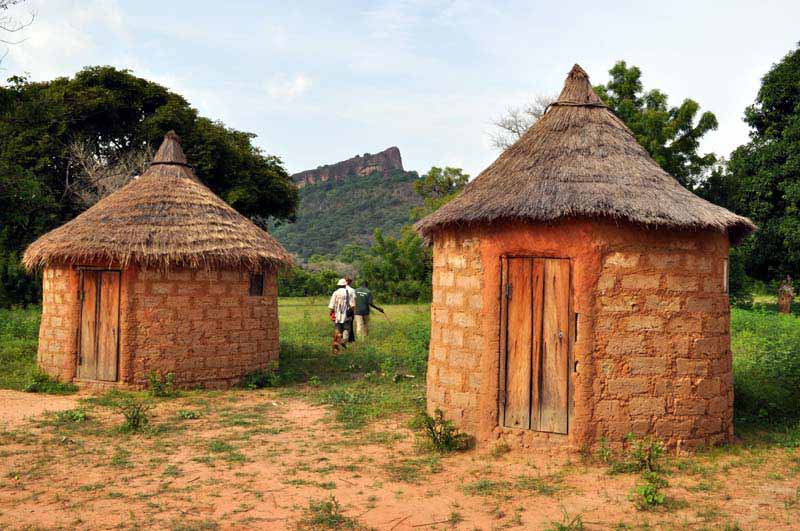 Niansogoni is a village of the Wara people, part of the larger Senoufo family with about 1 500 000 individuals, divided into over 30 ethnic sub-groups and present in three different countries, Mali, Ivory Coast and Burkina Faso.
Niansogoni is a village of the Wara people, part of the larger Senoufo family with about 1 500 000 individuals, divided into over 30 ethnic sub-groups and present in three different countries, Mali, Ivory Coast and Burkina Faso.
Niansogoni means ”among the hills” in the Senoufo language. The Wara name for the village,”kwomu” »(10 families) refers to the ten families who started the village. Not so long ago the Wara had their dwellings in caves in the cliffs. The last inhabitants of Niansogoni to leave the site and settle in the lowlands did so in 1980. This explains the overall good state of the former troglodyte dwellings and the vestiges that tell us what everyday life was like at the time: jars, oval-shaped beautifully decorated granaries, various tools and implements (hoe blades, cauldrons, iron horns, etc.) ((For more pictures and details, click here.))
Access to the site requires a ¾ hour climb. Guides – sons of the families who used to live in the caves – will be happy to take you there.
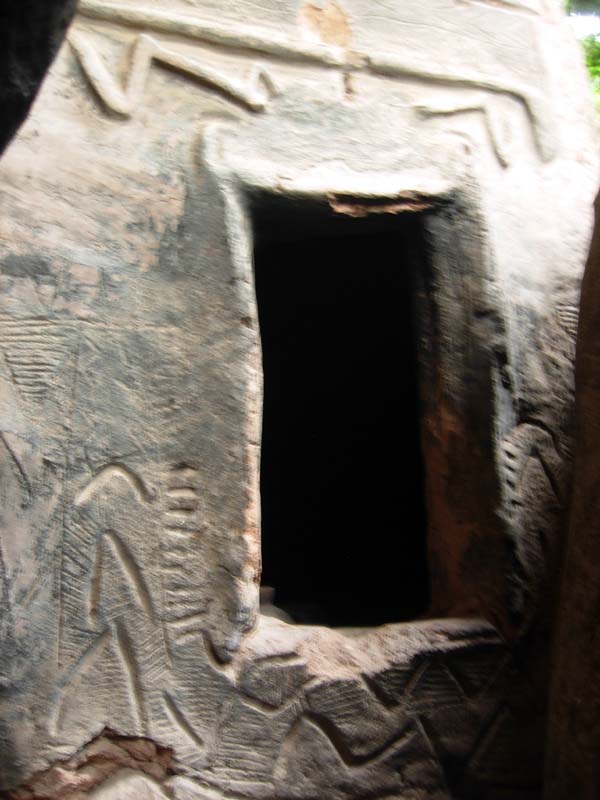
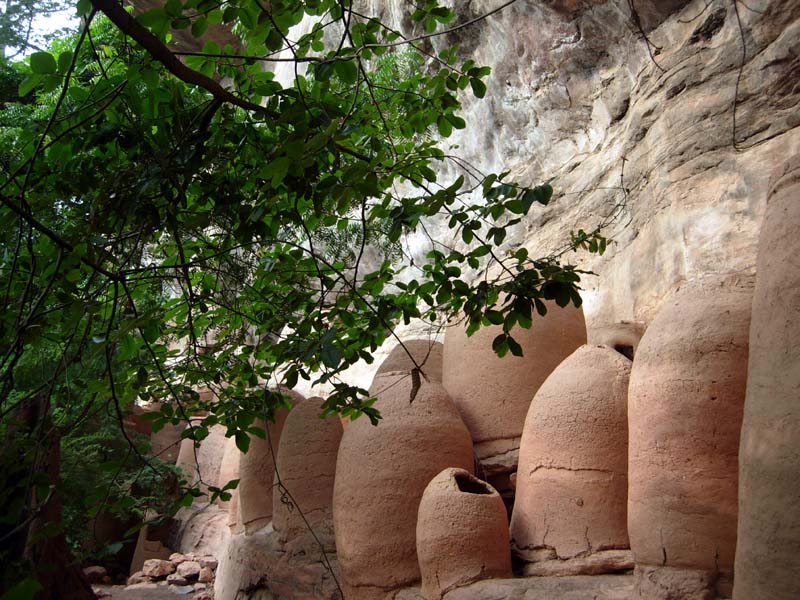 I must also say something about the camp. This was obviously not the first time I was given lodgings by peasant farmers. When I was in charge of the Kiembara parish of the Samo people in the north west of Burkina, half of my overnight stays in the villages was among peasant families. When I was learning Samo, and later Samoma, (not the same language group) I spent months living in the homes of peasant farmers. But in Niansogoni it was the first time I was housed in a hotel structure run by the village peasants themselves. And I found myself quite happy there and so did my fellow travellers: a round brick house (with an outdoor shower), a bed with a mosquito net and clean sheets, an entirely correct meal with a cool beer (thanks to a solar powered refrigerator), breakfast with bread and mango jam … all at a price of about 10€ per person.
I must also say something about the camp. This was obviously not the first time I was given lodgings by peasant farmers. When I was in charge of the Kiembara parish of the Samo people in the north west of Burkina, half of my overnight stays in the villages was among peasant families. When I was learning Samo, and later Samoma, (not the same language group) I spent months living in the homes of peasant farmers. But in Niansogoni it was the first time I was housed in a hotel structure run by the village peasants themselves. And I found myself quite happy there and so did my fellow travellers: a round brick house (with an outdoor shower), a bed with a mosquito net and clean sheets, an entirely correct meal with a cool beer (thanks to a solar powered refrigerator), breakfast with bread and mango jam … all at a price of about 10€ per person.
But the fact I appreciated the most is that tourists have not harmed (or spoiled – ”gâté” as they say here) the village. No child walked up to us to ask for a gift, a pen, or sweets, which all too often is the case at other tourist sites. I tried to understand how this had been achieved.

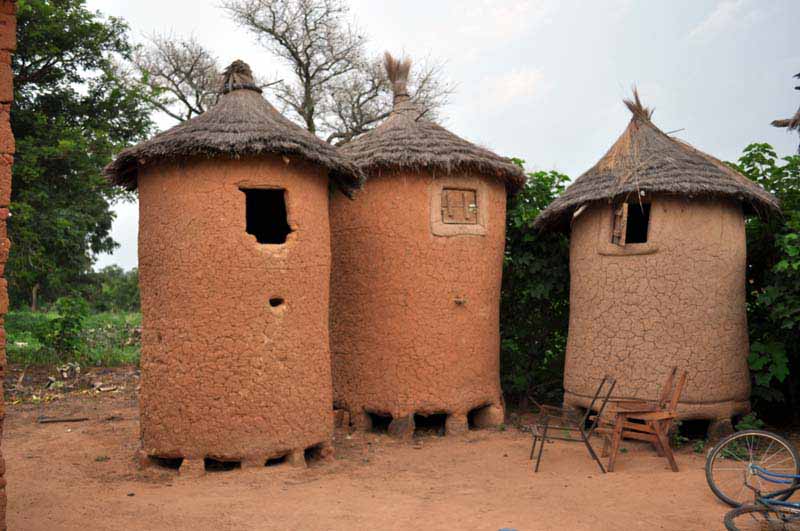 I turned to Richard. He was the one who started the camp: ”It was in 2002 that we had the idea of building a camp to cater for the tourists, since more and more were coming, in particular in January and February. We wanted to make sure from the beginning that the entire village was involved. Therefore we set up a solidarity association for the development of Niansogoni. Our elders take part. No important decision is taken without their agreement. Thus in 2002 we built the first four huts, the showers and the latrines.
I turned to Richard. He was the one who started the camp: ”It was in 2002 that we had the idea of building a camp to cater for the tourists, since more and more were coming, in particular in January and February. We wanted to make sure from the beginning that the entire village was involved. Therefore we set up a solidarity association for the development of Niansogoni. Our elders take part. No important decision is taken without their agreement. Thus in 2002 we built the first four huts, the showers and the latrines.
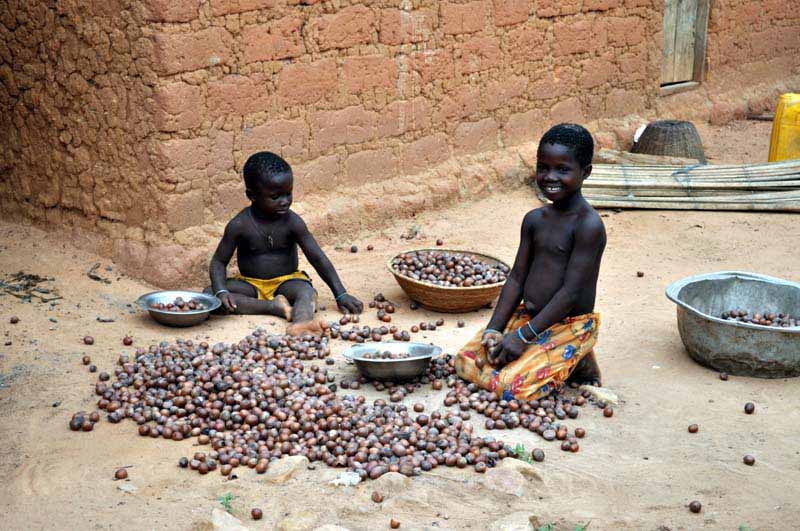
 I told him that I was surprised, but pleased, to note that no child had approached us to ask for presents or sweets. He answered: ”From the start and until this day we have been explaining to tourists that if they give our children gifts they will spoil them. I have visited the Dogon country (Mali) and I do not want to see tourists turn our children into beggars. Sometimes I tell visitors: ” Why should you, because you are richer than I, give my children more than I can give them myself?” There are villages where tourists have spoiled the children so much that some of them no longer go to school. This is also the reason why we created our association. If you want to help our children, give your gifts to the association. Then we can provide them with what they need for school. The tourists understand this line of thinking: Some have even gone as far as creating an organisation back home to support our village through the association. Thanks to them our school now has six classes, instead of the previous three.
I told him that I was surprised, but pleased, to note that no child had approached us to ask for presents or sweets. He answered: ”From the start and until this day we have been explaining to tourists that if they give our children gifts they will spoil them. I have visited the Dogon country (Mali) and I do not want to see tourists turn our children into beggars. Sometimes I tell visitors: ” Why should you, because you are richer than I, give my children more than I can give them myself?” There are villages where tourists have spoiled the children so much that some of them no longer go to school. This is also the reason why we created our association. If you want to help our children, give your gifts to the association. Then we can provide them with what they need for school. The tourists understand this line of thinking: Some have even gone as far as creating an organisation back home to support our village through the association. Thanks to them our school now has six classes, instead of the previous three.
Today many of the young have been trained to become tourist guides and helpers. In co-operation with travel agencies in Burkina they can take groups of 4 – 9 people on walks and hikes of one to two weeks.
This is, I believe, a very worthwhile peasant initiative that deserves to be known.
Koudougou July 9th 2011
Maurice Oudet
Director, SEDELAN